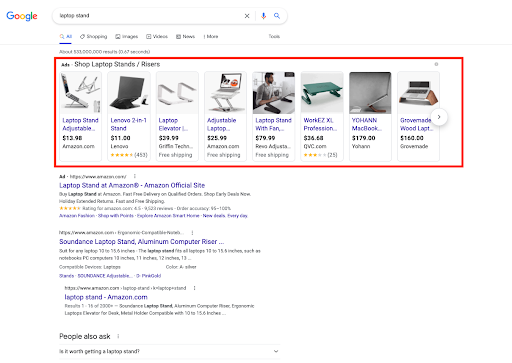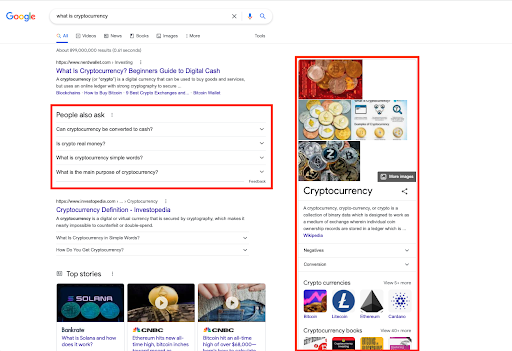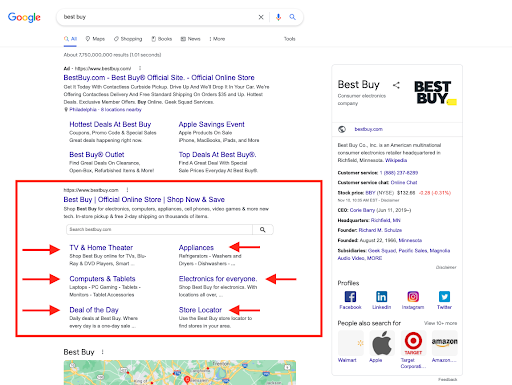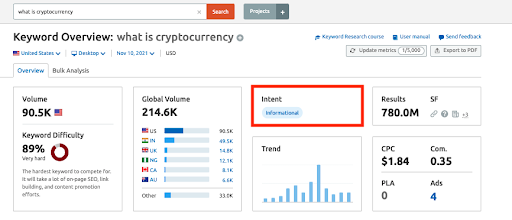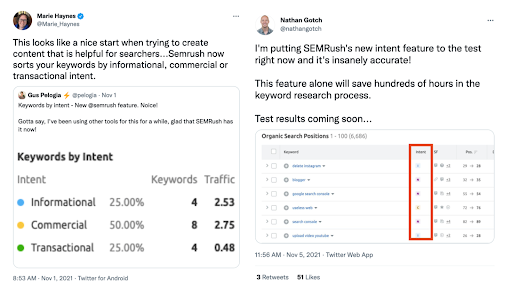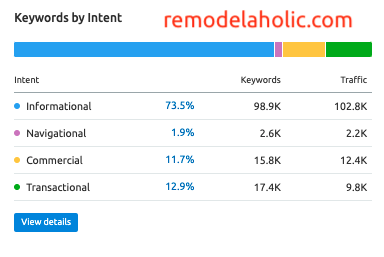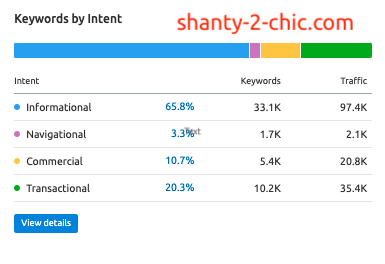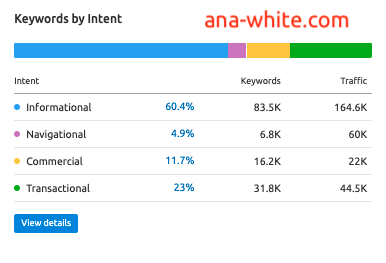Introduction
The cannabis market is on the rise. More states legalize both medical and recreational cannabis. More states are going to allow marijuana cultivation and selling within their borders in 2022. The majority of Americans support the legalization initiative. For the second year in a row, 68% of adults in the US think that cannabis should be legal.
As the market grows and evolves, it is time to be attentive to details. Being compliant with cannabis laws and regulations is one of the essential things you need to do when it comes to operating a business. Particularly, you need to pay attention to marijuana labeling and packaging.
Let’s talk more about them.
Why Cannabis Packaging Matters
In most cases, cannabis products are packaged as any usual prescription drug. Many medical cannabis dispensaries still use unremarkable small pill bottles. Sometimes they are green-colored, but it is the only change in their packaging design as the standard color is orange.
These pill bottles were introduced in 1970 to reduce the number of children involved in drug-related incidents. However, the incidents still occurred. In response, state regulators issued laws demanding dispensaries to put cannabis products into opaque packages inaccessible to children.
When it became clear that consumers removed their cannabis products from child-resistant bags and children still could access the product, manufacturers started to rethink their marijuana products’ packaging compliance strategies. They headed for more attractive and safe cannabis product packaging that would meet strict regulations. Such measures also gave space for branding.

However, branded packaging is usually damaged by labels. They typically contain information about the amount of CBC, THC, and other cannabinoids, whether or not the product has been infected with mold or if any traces were found on strains.
The information on cannabis product labels can tell how potent the product is and what type of high it provides. For instance, an effect of a strain that contains 3% of CBD will be different from the one that has 0%. The strains can be the same but still provide different effects.
Primary Goals and Benefits of Labeling Cannabis Products
Label requirements can seem a little bit complex. Not all states have legalized marijuana, but those that did legalize it have their unique laws for labeling. Cannabis label applications include different kinds of products, such as topicals, edibles, vaporizes, flowers, oils, concentrates, etc.
The majority of states require labels to be printed with content in detail. Among standard requirements to be described on labels are particular font size, active ingredients, dates of expiration and production, information about testing, manufacture data, and so on.
Marijuana product labels consist of 2 sections: primary panels and information panels. Each of them has its own purpose and function. For instance, primary panels usually include branding information, the name of the product, cannabinoid content, net weight, and any symbols. The information panel contains more detailed information. Commonly, it includes the following data: name and type of the strain, contact information, serial number, percentage of CBD, THC, etc.
You should remember that compliance data is the most crucial information in the cannabis industry. Before selling products, you need to ensure that labels meet state rules and requirements.
What else is essential when it comes to labeling?
- Efficiency. Manufacturers have reasons to reduce waste when it concerns cannabis product packaging. Using reusable materials can provide many benefits and reduce costs spent on producing products.
- Reducing costs. Some manufacturers use attractive branding to benefit from it and draw the attention of wealthier customers. However, other manufacturers prefer simple and law-cost packaging solutions.
- Ecological sustainability. Some cannabis packaging facilities use marijuana for packaging cannabis. Though, paper and reusable plastic can also help reduce harmful impacts on the environmental footprint, which is appreciated by those who stand for ecological protection and environment-friendly packaging.
- Aesthetics. Cannabis culture is considered unique by its proponents. That is why they prefer to develop outstanding package designs. Aesthetics packaging attracts more customers and outperforms competitors, which results in an increased income.
Packaging Examples for Specific Product Types
Packaging cannabis-related products can have some pitfalls as its requirements are strict and vary from state to state. Compliance is the first thing a designer should think about when developing a package design. It should protect products from anything that can damage them. Moreover, packaging must be child-resistant to reduce the harm a child can experience.

However, packaging solutions will depend on the product type. Here are some thoughts to bring you ideas:
- Cannabis flower. Marketing can take advantage of attractively designed, smell-proof containers. Some manufactures produce customized and child-resistant cases made of different materials: from metal to wood or even glass. These containers often help to protect a product from expiring and spoilage.
- Edibles packaging. As edibles are chocolates, gummies, and other candies that can attract children’s attention, edible producers should be pretty careful when it comes to packaging. Therefore, they need to use solutions that will minimize the risk of a child consuming cannabis-infused products.
- Concentrate packaging. Concentrate providers have a tendency to rely on cosmetics aesthetics in designing their packaging. However, they also need to remember about child product protection.
Essential Elements of Marijuana Labels
There is hope that one day the labeling requirements will not be so complicated as the cannabis industry matures.
Meanwhile, as we said above, the information included in labeling varies depending on the state. However, there are common elements each label of a medical product will have. Here is the list:
- Product identity;
- Net weight or volume;
- Ingredients;
- Activation time;
- Tracking information;
- Warnings;
- Information about a retailer or a manufacturer.

Product identity
Most product labels should have a brand logo and identity statement on their front panel. The brand logo will spread your company’s name, and the identity statement will inform customers about the product. Make their shopping experience smoother by telling them whether they buy cannabis-infused cream, marijuana oil, CBD chocolates, etc.
In addition, the law requires to make it clear that the product a customer is going to buy is cannabis-infused.
Net weight or volume
The net weight of a product should be displayed on the front panel. It shall include the number in metric and US customary system units. In other words, the weight shall be written both in grams or milliliters and ounces or pounds.
Ingredients
Any cannabis-related products should have a list of ingredients on the product label. Ingredients are always displayed from heaviest to lightest. A manufacturer shall not tell a lie in the ingredient list and call them by their common name.
You will also need to include the list of terpenes and active ingredients as the products are cannabis-related. This information concerns the percentage of THC, CBD, THCA, and CBDA. They will help a customer understand the effect that the product will produce.
Activation time
Some states require an activation time to print on labels. It shows the time when a person can expect to feel the effect of the product. It is necessary for those containing a high amount of THC as it produces a high effect.
Tracking information
Medical cannabis labels include an ID or UIN (unique identification number) such as barcode, the name of the lab that tested the product for safety, and the production date. This data is important not only for patients but also for manufacturers and dispensaries. As well as for compliance with the laws and regulations.
Importantly, the expiration date can help a customer decide whether to buy a product or not, whether it is fresh or about to expire.
Warnings
A majority of states require warning statements on product labels. Actually, they are one of the essential elements on a label as some people are not aware of the risks related to consuming cannabis and cannabis products.
In most cases, manufacturers place a piece of information telling that a product is for medical use only or it can impair your ability to drive a vehicle, coordination, and concentration, or marijuana produces intoxicating effects, or it may be harmful to pregnant ladies, etc.
Information about a retailer or a manufacturer
The name and address of the manufacturer or distributor are important to place on a label. It allows consumers to report to you about any unusual reactions they may feel. Also, some of them would love to share their feelings about the product and thank you.
Balancing Compliant Labeling with Branding
Among so many requirements for label compliance, you need to find space for branding and aesthetics. The designing process can be complex. Nonetheless, it needs to be done if you want to stand out and attract customers.

Here is what you need to think about:
- It is essential to understand your target audience’s needs and preferences. Understanding and using this information will show customers that you care about them and give them a reason to buy from you. You need to build trust and connection with your customers if you want them to purchase more.
- Your brand is the opportunity to make the first impression. Understanding what you are selling, what customers are buying, and what their expectations are is necessary for the first impression. For instance, if you want to be perceived as an eco-friendly brand, then everything should match your message: from colors to labels and signs.
- Logos, brand colors, and taglines that the branding consists of will increase the level of your product’s perception and create certain feelings for customers. They impact the overall presentation of a product. You should develop an identity that will make your product unforgettable.
Challenges
Staying compliant with the law and developing an attractive design can come with several challenges. For example:
- Small size. Cannabis products often come to market in small containers. Some of them can be just a few ounces; although, drinks are bigger. And requirements for beverage labeling are different. You have to place a lot of information on labels. It can be quite a challenge to fit everything on them due to their small size.
- Hard to achieve accuracy. Surprisingly, despite the strict regulations, cannabis labels contain errors. They can show more or less CBD than was written on a label. However, these errors are not made on purpose. They are just simple mistakes. Nevertheless, they can result in fines or customers’ mistrust. There is too much information to put on a label, and errors seem unavoidable.
- Too much information. States specify and add the required label information from time to time. It looks like there are more and more requirements and less and less space on a label.
- Branded label damage. Days of label design development can be wasted due to a compliance label. Sometimes, a slapped compliance label covers the branded label, and it becomes invisible to people.
- Continually changing regulations. Regulators constantly work on cannabis-related laws; that is why they change from time to time. It means that you will also need to change your label from time to time.
Advice for Designing Cannabis Labels

Well, we have spoken a lot about the importance of label compliance. What can we recommend when it comes to designing cannabis product labels?
- Consider the labeling technologies. Smart tags, ECLs, and VPD can help you fit all information on labels and save your branded label design. As a result, your products will be compliant and attractive to customers simultaneously.
- Make the text readable. It is essential for your relationship with customers that they can read what is written on labels. Choose a font suitable for your brand style that allows customers to find the information they need.
- Add negative space. Yes, we understand that finding space for all essential information is still quite challenging, and here we are advising you to add negative space. However, if you have some ideas on implementing negative space, you should definitely use them as a text with negative space that will be perceived as neat and orderly.
- Make a compliance label stand out. Think about making a compliance label a part of your brand design. If you cannot get rid of it, make it work for you. Try unique colors and fonts that can be both legible and aesthetically pleasing.
- Try different materials or embellishments. Materials or embellishments are small details that can help your products stand out in the row and impress the customers with out-of-the-box thinking.
- Reconsider the size of your container. How small or large can your container be? Maybe, you need to change the amount of the product sold and the size of the container. Consequently, a label will be more prominent, and you will fit all information on it.
- Be careful when choosing artworks. A majority of states prohibit cannabis businesses from using children-related pictures for their package design. It also concerns cartoon characters, animals, and so on.
- Remember about child resistance. Cannabis businesses should make an effort so that marijuana doesn’t get into the wrong hands. Child-resistant containers are one of the solutions.
Point-Of-Sales
Not only manufacturers and cultivators worry about labeling requirements. Dispensary owners think about them, too. If you have dispensaries in different states, you need to create various labels compliant with local state rules. Some states demand just the general information to put on a label, such as weight and strain details. Others require, for instance, laboratory tests and the testing dates to be displayed on labels.

When there is no time and desire to spend hours on developing all labels, you can use a tech solution, such as a POS system. It automates the label-creating process and reduces the risk of human error. Plus, the manual work is eliminated. The POS system saves your time and money. Moreover, POS system developers constantly update their solutions which allows you to stay updated on the changing laws and regulations.
You can consider the IndicaOnline POS system, an all-in-one cannabis dispensary POS system. We provide not only software but also hardware designed by our partner Zebra.
The IndicaOnline POS system is secure and straightforward. It is compliant with all state and province laws. We keep our nose to the wind when it comes to changes in regulations. We implement them in our POS as soon as possible, so you are always aware of new rules and requirements. You will always be able to create licit labels and meet the regulations.
Furthermore, we also offer additional perks such as digital TV menus, SMS/Email marketing, Driver App, RFID inventory, and other solutions. All of them are designed to simplify the dispensary workflow and the budtender’s job. Together they reduce the manual labor and allow the dispensary employees to focus on their primary tasks like communicating with customers and providing them with a better shopping experience. When there is no necessity in conducting the processes that can be automated, the staff can spend more time consulting customers and offering them more suitable solutions.
Hardware That Can Help
Along with solutions for printing labels or POS systems, other hardware can give you an advantage in automating dispensary processes. The following solutions may help:
- Label printer. We have talked a lot about the importance of labels in the cannabis industry. Labels are necessary at all stages of cannabis production: from tracking plants to their sale. There are label printers capable of producing labels of different sizes and shapes that will attract customers and encompass your brand.
- Receipt printer. As the cannabis industry is the object of close regulators’ attention, the proof of a legal purchase is quite essential. You can provide it with the help of receipt printers. There are also specific requirements for receipts depending on the state rules. Undoubtedly, it is better to stay compliant with them in order to avoid fines and penalties.
- RFID scanner. It gives you a significant advantage when it comes to inventory management. As we know, manual inventory management can be time-and money-consuming, and the risk of a human error is relatively high. Modern RFID solutions are capable of counting goods in a matter of seconds with 99% accuracy. The inventory can be conducted every day or even several times a day, which will help to reduce the risk of shrinkage or product spoilage. Check out the IndicaOnline RFID reader.
- Cash drawer. Cannabis is legal in many states, but it is still illegal at the federal level. That is why it is the industry that is mainly powered by cash. Some dispensary owners manage to find workarounds and allow customers to bring credit or debit cards. However, a majority of them prefer cash purchases.
Inventory Management
Let’s talk a bit more about inventory management. The cannabis industry is not an exception when it comes to it. Just like any other retail business, it faces challenges in counting all the products.
The cannabis business owners shall report to Metrc or BioTrack about their business results. In the case of dispensaries, it means reporting about products sold, damaged, stolen, etc. Moreover, you shall report a reason something happened to the product. The regulators want to ensure that you are not engaged in illegal activities related to cannabis.
A good POS system can help you optimize the inventory management process. It automatically scans the newly arrived products and combines them with the reporting features. So, the number of what has been delivered and how many is always accurate. As a result, you are aware of the goods you have at your disposal.
Conclusion
As we have said above, the cannabis industry is the object of law enforcement’s close attention due to its illegality at the federal level and the peculiarity of the product sold. You should stay compliant with the law to avoid unnecessary problems, such as fines and penalties.
However, there are a lot of tech solutions that can help you automate the workflow and meet all regulatory requirements. The list of hardware and software is long. But think about obtaining them to have steady nerves and work in calm conditions.








